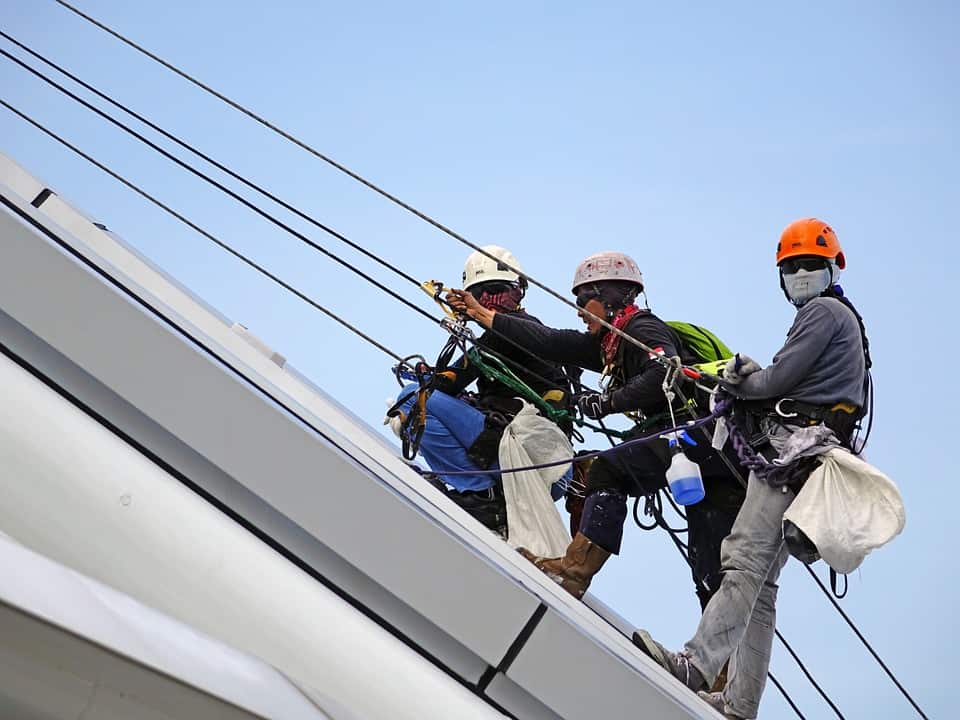
Working at great heights is one of the most dangerous jobs in the world, whether you work for a professional company or you’re simply doing a home project. Proper safety equipment needs to be on hand.
You also need to have a basic understanding of safety procedures while working at great heights, one reason that Sydney Confined Space Training is something that most businesses use to train their workers in all facets of this dangerous line of work. Basic safety equipment for working at heights will be detailed in the 7 safety equipment objects listed below.
1. Railing
If you’re working at great heights, a railing may save your life. By using railing, businesses decrease the chances of a fall substantially, and it allows workers or volunteers to do their jobs in a way that’s more efficient. Safety railing is vital when someone is working at very tall heights. No business should be without a safety platform that includes railing.
2. Harnesses
Some workers require harnesses that serve as lifelines in the event of a fall. Someone working on a tall building, for example, will often have harnesses and safety lines to protect them in the event of a fall. This type of safety equipment is vital for work at very tall heights.
3. Gloves
If you’re going to be going up and down steep ladders, gloves that increase grip might be the difference between life and death. Ladders themselves can sometimes be very slippery depending on the weather conditions someone is working in. Gloves allow a person to get a sturdy grip on the ladder and feel and be safer while they’re maneuvering up and down.
4. Hard Hats
Working at even small heights require hard hats. Why? Well, they can be the difference between life and death sometimes. These hard hats are especially designed to absorb impact and direct it away from the brain/head region so that less injury occurs in the event of a hard fall. Hard hats have long been one of the primary safety equipment of workers that must tackle steep heights.
5. Shock Absorbing Lanyard Kit
This is part of the harness system and gives additional protection during a fall. It basically catches the worker and protects against broken bones and other injuries as a result of jarring. When working at heights, a single slip in attention can result in a free fall. Shock-absorbing lanyard kits are designed to protect against these free falls.
6. Fall Arrest Training
Believe it or not, training can sometimes be the most effective “equipment” that a company can supply workers who are working at great heights. It teaches them how to be safe on the job and how to deal with the great heights they must work with and any safety issue they may deal with while on the job. If you want safe workers, or need to be safe while working at heights yourself, it’s fall arrest training that can often save lives.
7. Anchors
Anchorage system has long been a part of industries where workers are busy working at great heights. These anchors must be of specific strength, and they must be independent of scaffolding. These regulations keep workers safer. Anchorage itself will help to prevent a fall and give workers an anchor point to keep them safe.
All of this safety equipment is required by law when workers are working at tall heights. Many people realize how dangerous heights can be and the devastating damage that a fall can cause to a worker. It’s a dangerous situation that even a bystander realizes it dangerous.
People in charge of worker safety need to be doubly diligent about this kind of danger and make sure that their workers are protected in the event of any kind of fall.
Personal fall protection is a large industry and offers many different types of equipment to help workers and even laymen be safer while they undertake tough jobs at tall heights. By making sure that workers, or that you have this type of equipment while working at heights, you reduce the chances of injury or death.